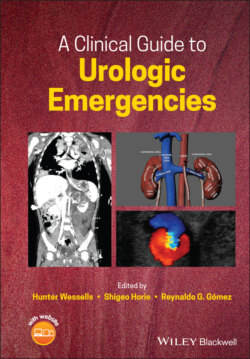Читать книгу A Clinical Guide to Urologic Emergencies - Группа авторов - Страница 21
Non‐operative Versus Operative Management
ОглавлениеPublished series of blunt trauma patients suggest that when patients are matched by grade and mechanism injury in an operative cohort compared to a more conservatively managed cohort, the rate of nephrectomy is lower, complication rates are similar, and length of hospital stay is shorter with non‐operative management [45–47]. Further supporting these data, hospitals that have changed their policy toward renal trauma management to adopt a non‐operative approach have shown significant (two‐ to six‐fold) decreases in renal exploration and nephrectomy without seeing an increase in complications [46, 58, 59].
In comparing series of grade IV blunt injuries that were managed non‐operatively versus those who underwent exploration, higher rates of exploration are associated with higher rates of nephrectomy [45]. Finally, there are published series of patients who have sustained blunt grade V injuries, usually complex parenchymal lacerations (e.g. shattered kidney), who have been managed non‐operatively. One such series showed a decreased rate of transfusions, shorter ICU length of stay, and fewer complications for the conservatively managed patients [60]. A recent series showed that just over 50% of grade V injuries were able to be managed non‐operatively [61].
